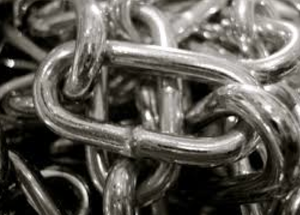3 Fundamentals of an Indestructible Business Continuity Plan
To be a successful managed service provider, you need to protect your customer’s critical business data. This involves a lot more than just providing a simple backup and disaster recovery solution. After all, what will you do if your client has lost all power or can’t access their office? The missing piece? Intelligent business continuity.
February 18, 2016

By Datto Guest Blog 2
 To be a successful managed service provider, you need to protect your customer’s critical business data. This involves a lot more than just providing a simple backup and disaster recovery solution. After all, what will you do if your client has lost all power or can’t access their office? The missing piece? Intelligent business continuity.
To be a successful managed service provider, you need to protect your customer’s critical business data. This involves a lot more than just providing a simple backup and disaster recovery solution. After all, what will you do if your client has lost all power or can’t access their office? The missing piece? Intelligent business continuity.
Here are three essentials of a top-notch business continuity plan for your customers’ businesses (as well as your own).
Ensure employee well-being. The elements and structure of an effective business continuity plan will depend largely on the company, but one factor remains constant: You have to address how a company will guarantee employee safety. The answer? Communication is key when it comes to an emergency or a business disrupting situation. Make sure you’re considering worst-case scenarios in this plan. For example, what if the email server is down? What is the office lost all power? What if cell phone reception was compromised? How will you contact your employees? In this case, designate a meeting spot for employees to congregate that’s covered and easy to find. A call tree or phone tree may be the most appropriate avenue to contact all employees. Make sure everyone is aware of the plan by posting it somewhere visible both virtually and at any offices. Schedule at least two dry runs of the plan per year. It’s important to cover all bases and ensure your plan is in place and apparent to all those involved.
Keep customers in the loop. Managing customer relationships is critical to the ongoing success of a business. If an event occurs that will impact their lives in any way, it is critical to communicate the details of the issue in a timely manner, carefully outlining the steps you are taking to mitigate it. This may mean direct communication to your customers via the phone or an email (preferred method), but it could also mean messaging via social media in case the phone and/or email systems are not available. Failure to do so can have a negative impact on the reputation of your brand, which could take years to repair. Remember, honesty goes a long way.
Understand your recovery capability. In the event of a disaster, it’s important to be aware of exactly how long it will take your business operations to recovery. To determine this, focus on two key concepts: recovery time objective (RTO) and recovery point objective (RPO). RTO is the time that it takes to restore a system following a failure or disaster event. RPO is the point in time to which data can be restored following the event. So, if you performed a backup at 6:00 p.m. each night and a server failed at 5:00 p.m. the following evening, your RPO would be 23 hours, and any data created during that span would be lost. Sounds complicated? Don’t worry–we’ve automated this for you. Learn your RTO in minutes using Datto’s RTO calculator.
By following through on these three best practices, you’ll be well on your way toward a proper business continuity plan. But it doesn’t end here. Check out Datto’s recent eBook, The 4 Business Continuity Planning Essentials, and make sure you’ve covered all your bases. You might regret it if you don’t, but you’ll never be sorry you did.
Rob Rae is vice president of business development at Datto.
You May Also Like
